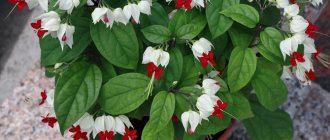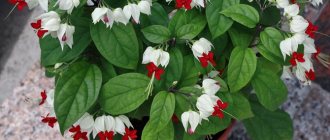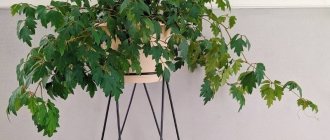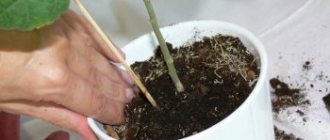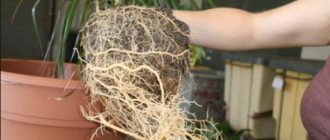Content
- 1. Micro-drip automatic irrigation devices
- 2. Ceramic cones
- 3. Enema balls
- 4. Self-irrigating pots
- 5. Organizing automatic watering with your own hands: three simple ways 5.1. 1st method
- 5.2. 2nd method
- 5.3. 3rd method
How to take care of moistening the soil for indoor plants before leaving the house for a long time? An automatic watering system will come in handy.
How to prepare indoor flowers for the departure of the owners
Despite the effectiveness of automatic watering, experienced flower growers advise carrying out simple measures if the owners are going on vacation for a couple of weeks. The right approach will reduce the load on the root system and prepare the plant for less fluid and nutrient consumption.
What to do:
- shortly before departure, remove the flowerpots from the windowsill, move the stands with plants away from the windows so that the moisture evaporates less;
- thin out the leaves a little, cut off the buds and blossoming flowers;
- Apply a layer of mulch from sawdust, moss or finely chopped straw. Before the operation, moisten and loosen the soil, then add about 1 cm of any natural component from the list.
Automatic watering for indoor plants saves the soil from drying out, and flowers from dying in the absence of their owners for a long time. There is no need to spend money on ready-made systems from agricultural stores: practically free automatic watering for green decor in your home can be easily and quickly done with your own hands. Useful information to help flower growers: types, advantages, production methods, useful tips.
Below is a video from which you can learn several more ways to automatically water plants:
Micro-drip automatic irrigation devices
For a collection of plants in one room, on a balcony, loggia, patio or in a greenhouse, garden micro-drip automatic irrigation systems are suitable. These are the “younger brothers” of gardening systems, described in detail in the article “Which automatic watering systems are suitable for plants in the garden.” Microdrip devices are connected directly to the central water supply. Water is supplied and turned off at a specified time thanks to the built-in timer. When you go on vacation or a business trip, you don’t have to worry about the fate of your “green tenants.”
The best option for a house or apartment with an average collection of up to 30 plants is a microdrip irrigation system with a reservoir . There are many tubes coming out of the tank through which water flows to the droppers. The latter come in plastic or with a ceramic tip that is stuck directly into the ground.
IN THE PHOTO: Microdrip irrigation system with a reservoir for a collection of up to three dozen plants.
A regular dropper is manually adjusted with a special wheel. Scrolling it regulates the intensity of watering, for example, up to 20 ml. (20 drops) per hour.
Ceramic tips of advanced models play the role of soil moisture sensors. Depending on the soil moisture level, the drippers supply water or stop watering.
Drip irrigation systems for indoor plants
We present to your attention options for drip irrigation systems for home flowers.
1. CAPILLARY MAT FOR TRAY IRRIGATION
This special covering made of hygroscopic material is placed in any convenient flat place, and a garden film is laid under it. The edge of the capillary mat or its cut strip is moistened with water and lowered into a container with liquid.
- For home use, do not buy capillary geotextiles; they are made from recycled materials.
CAPILLARY MAT PRICE : about 3 euros per linear meter of a roll 100 cm wide. For example, Vivapol (Germany) with Aquafol protective coating and a moisture capacity of three liters per m2. The width of the rolls is different: 100, 125, 150 or 200 cm, color black or white.
2. IRRIGATION TRAY FROM CAPILLARY MATS
This automatic watering device consists of three parts: a capillary carpet, an external and an internal tray.
The inner tray is covered with a capillary carpet, on top of which a pot with a plant is placed. The inner pan is placed in the outer pan, into which water is poured. The carpet absorbs water and transfers it to the plant.
- Similar designs are produced by many companies (Garland (England) and others), which assure that the plant will live autonomously for up to two weeks.
PRICE : price on Amazon is 7-8 euros per pallet with dimensions (55 cm length, 31 cm width, 3 cm height) and a capacity of 1.8 liters of water made from environmentally friendly materials.
3. AQUA GLOBES TYPE DEVICES
Devices like aqua globes (watering tubes, glass watering sphere, etc.) are becoming widespread: a glass flask with a ceramic cone. The structure is placed in the soil mixture, where it evenly moistens the substrate due to its capillary-porous structure.
Aqua globes are one option.
AQUA GLOBES PRICE : on Amazon 10-12 dollars for 2 pieces, in the CIS in stores you can find it for about three dollars per piece.
- TIP: if there is no need for a beautiful appearance, then watering a device made from a plastic bottle will not be much worse, but it will be free.
4. CERAMIC CONES FOR WATERING PLANTS
Ceramic cones can be sold separately without a water container (for example, Blumat Tube Automatic Plant Waterer), and they receive moisture through a thin hose from a water container.
The lower part of the cone is made of special clay, which analyzes soil moisture and releases moisture after sufficient drying.
By changing the height of the plant pot in relation to the water container, you can regulate the amount of moisture received.
Blumat irrigation system
BLUMAT SET PRICE: on Amazon 12-15 euros. Separately, a cone from an unknown manufacturer can be purchased in the CIS for approximately $1.50 apiece.
5. SMART FLOWER POT WITH AUTO-WATERING
Smart pot systems for flowers with automatic watering are becoming increasingly popular, for example, from the website smartpots.com_ or.
This device is easy to plant and maintain: you only need to add water once every 20-25 days.
- In Europe and the USA, many people use smart pots everywhere in the garden, growing garden crops (tomatoes, cucumbers), strawberries.
SMART POT PRICE: Average on Amazon from $13 to $35 per pot depending on its size and capacity. Aliexpress has a large number of different options and at different prices.
6. HYDROGEL FOR HOUSE PLANTS
Hydrogel is a special polymer that absorbs a large amount of moisture (two grams can absorb up to 200-500 ml, according to various sources) and slowly releases it to the plants. Hydrogel for indoor plants is mainly found in the form of granules or balls, colorless or colored.
- Ideally, the plant should already be planted in a soil mixture with hydrogel (they recommend two grams for about 800-1000 grams of substrate) and before leaving you just water it generously and that’s it.
Now hydrogel granules with complex fertilizer have appeared, which, in addition to moisture, supply the plant with nutrients.
According to manufacturers, on average, such hydrogel granules last for 3-4 years.
OTHERWISE: before releasing, soak the hydrogel in water for 7-8 hours, and then sprinkle the granules on top of the soil mixture and cover with moss. If the root system is not of a superficial type, then the hydrogel can be buried 2-3 cm deep.
HYDROGEL PRICE: on aliexpress: 7 colored pieces - from one dollar, 125 smaller colored pieces - about 3 dollars, 100 medium transparent pieces - about 7-8 dollars, 500 small multi-colored pieces - 10 dollars. Also available by weight: 500 grams – $20.
- There are many options and they can change so you need to keep track.
Ceramic cones
are popular among gardeners . These are a kind of “carrots” from which plastic tubes extend. The “carrot” is stuck into the pot, and the end of the tube is lowered into a reservoir of water. In this case, the water supply process is not controlled manually. Moisture comes from a pressure vessel every time the soil dries out.
they unanimously speak about the high quality and reliability of the devices. However, the unsuccessful experiences of some gardeners have shown the opposite. Ceramic cones get clogged easily and sometimes do not produce the required pressure. We have to look for the right place for the water tank in order to create this pressure. But here, too, a problem arises: if you install the tank too high, there is a risk of flooding the plant; if you install it too low, the water may stop flowing altogether.
IN THE PHOTO: Ceramic cones are not very reliable, because... often clog and do not always provide the required pressure.
If there is no free space to install a vessel with water near the plant, use a ceramic bottle attachment. The advantage of this method is its ease of use. Attach the nozzle to a regular plastic bottle of water, insert it into the pot and forget about watering. The device will control the water supply itself, and the plant will receive exactly as much as it needs. This is an excellent economical option: when using large two-liter bottles, you won’t have to think about watering for a whole month.
IN THE PHOTO: A ceramic bottle nozzle is a simple and economical option for automatic watering.
There are decorative variations of ceramic cones in the form of animals, birds, butterflies, etc. They look very cute and can liven up the interior. But, unfortunately, such “toys” are not suitable for watering: due to their small volume, you will have to frequently add water.
How does it work?
Water, under the force of gravity and pressure of the air column located above its surface, enters the soil and squeezes air out of it. The pressure of gases inside the container is affected by temperature changes. The more air, the stronger the pressure.
When the ground gets wet, gases stop flowing into the bottle through the cone, blocking the seepage of moisture . After the soil dries out, the water supply is resumed. When heated, the liquid expands and the pressure increases. If the air temperature drops, the pressure weakens and the amount of water decreases.
To feed plants, add water-soluble dry or liquid fertilizers. To ensure that the system works without interruption, gardeners recommend cutting off the bottom of the bottle or making a hole with a thin needle. Manufacturers of cones for watering ornamental plants in apartments do not recommend piercing the container.
Enema balls
Externally, “enemas” look like spherical flasks with watering pipettes, which are filled with water and inserted into the pot. When the soil begins to dry out, oxygen enters the stem of the flask and pushes out the amount of water the plant needs. In general, “enemas” are a good option for automatic watering, but they do not dose water well and sometimes flood the plant.
IN THE PHOTO: Enema balls provide watering to the plant and look original in the container.
What is it, where and what is it used for?
The bases of the cone tips are screwed onto the neck of the bottle.
Nozzles help organize automatic watering of flowers in apartments or loggias when the owners are absent for a long time.
Gardeners use polymer bottles for irrigating plants in:
- greenhouses,
- greenhouses,
- on open ground.
Water drops from a plastic container into the soil.
Drip irrigation from plastic bottles with nozzles provides automatic irrigation of ornamental plants in:
- apartment,
- small greenhouses,
- in the flower beds.
The device is not suitable for watering vegetables in large areas of open ground.
Self-irrigating pots
A self-irrigating pot consists of two containers. A plant is planted in one of them, water is poured into the other. The plant gradually absorbs moisture through special wicks.
IN THE PHOTO: “Smart” containers cope with the function of automatic watering of plants. Photo by Tatura Florist.
Such a container is usually equipped with a water indicator. This allows you to accurately determine how much moisture is left in the pot and when you need to add it. The technology for independently setting up such an irrigation system is shown in the video: “LECHUZA Automatic Irrigation System.”
Advantages and disadvantages
Positive points:
- the method is cheap: many structures are made from scrap materials;
- good result: the soil remains moist for a long time;
- no special skills are needed to manufacture home automatic watering systems;
- variety of options;
- The method is suitable for moistening the soil in flowerpots of large and small volume, flowers of various types.
Minuses:
- you need to experiment in advance, select the optimal length, material for the “wicks” and the diameter of the holes in plastic containers.
On a note! It is advisable to test automatic watering systems at a time when the owners of the house do not intend to leave their home for a long period of time. You can make two or three types of structures, check which one works better, what to make the “wicks” from, what type of automatic watering will be optimal. It is important to experimentally find out the diameter of the holes in the caps of plastic bottles so that moisture does not flow out too quickly or, conversely, very slowly.
Organizing automatic watering with your own hands: three simple ways
Automatic watering of a plant collection can be organized independently, in a short time and without significant material costs.
1st method
You will need: several hospital droppers according to the number of plants that need watering, a 5-liter plastic bottle, an elastic band or wire to secure the ends of the tubes.
How to do:
- Remove the needle tips from the droppers.
- Check the droppers for integrity by blowing into them. If the tubes are not damaged, they will be well ventilated on both sides.
- Connect the ends of the tubes together and tie them with an elastic band or wire. This way they will lie calmly at the bottom of the bottle and not float on the surface. Try not to pinch the tubes .
- Place the tied ends of the IV tubes into a bottle of water and place the bottle as high as possible.
- Open the dripper regulator, letting water flow through the tubes, then immediately close it.
- Insert the free ends of the tubes into the pots and use the wheel to adjust the amount of incoming water.
ON VIDEO: In addition to droppers, medical syringes are suitable for creating homemade watering devices. From such a syringe, a plastic bottle and a PVC tube, a drip irrigation device is obtained.
2nd method
You will need: a plastic water bottle. The size depends on the root ball of the plant. For a tub, take several medium-sized bottles, for a compact pot - one small one.
How to do:
- Make small holes in the bottle cap.
- Place the bottle upside down in the container with the plant.
IN THE PHOTO: Automatic watering from a bottle, plastic or glass, is also good for indoor seedlings. Photo by Megan Andersen-Read.
3rd method
You will need: nylon cords or laces, woolen threads, twisted bandages or any materials from which wicks can be made; a basin or bottle filled with water; peg for fixing the wick.
How to do:
- Twist an improvised wick from scrap materials.
- Place one end of the wick into a container of water.
- Secure the other end into the plant container with a stake or other means.
This method of moistening the soil is described in detail in the article on wick watering of indoor plants.
IN THE PHOTO: Wick automatic watering will keep Saintpaulias healthy and fresh. Photo by u/skysong4.
Scheme
You can build automatic watering with your own hands in the following ways:
1. Double bottom of pots. To do this, place a 1-3 liter water container at the bottom of each pot. These can be bowls, cut plastic canisters, etc. In order to subsequently easily fill with water, a tube is installed in them in advance. The top is filled with gravel or pebbles and covered with cloth. Soil is poured on top of it, plants are planted, and then they are watered. If there is too much liquid, the excess comes out through the drainage hole at the bottom of the pot.
2. Wick system. To do this, you will need to make a wick from a synthetic material that will not rot with constant exposure to moisture. Immerse one end of it in water and the other in a container of water.
A few final tips
- Micro-drip auto-irrigation systems connected to a central water supply are preferable for medium and large collections of plants.
- If the water supply is shut off during your absence, a micro-drip system with a reservoir is recommended.
- To water individual plants, use bottles with ceramic tips - simple, cheap and effective. One 2 liter container. Enough for about a month of watering.
- If the automatic watering system is not equipped with a soil moisture sensor, it is better to purchase it separately. The presence of such a sensor will save plants from destructive waterlogging of the soil.
Pros and cons of using
Drip irrigation from bottles using nozzles has the following advantages:
Free packaging: no need to throw away used plastic bottles.- No skills required for installation.
- Automatic watering from bottles can be used to irrigate green hedges, ornamental plants in apartments, on balconies, in flower beds, vegetables in closed and open ground.
- Water consumption is reduced.
- The soil does not dry out or become waterlogged.
- Time for watering is saved, the soil is not washed away, and there is no need to loosen it.
- Moisture does not fall on the leaves, so the risk of fungal diseases is reduced.
In addition to the advantages, drip irrigation from bottles has the following disadvantages:
- Drip irrigation from bottles with cones is not suitable for large areas of open ground. It takes a lot of time to adjust and replenish the water supply.
- The nozzles are designed for containers from 0.5 to 2.5 liters; the thread does not fit five-liter canisters.
- On loamy soils, the cone holes quickly become clogged.
- The high price of cones with taps increases the cost of production.
- The structure is unstable and can be overturned by wind, rain, or domestic or wild animals.
- The water blooms and quickly evaporates.
Water distribution system.
The basis of the water distribution system are medical droppers. They required minimal modification.
In particular, for the outlet holes I used the needles and protective caps from the air filters that came with the kit.
We had to drill a dozen holes in the caps.
Another design element is the manifold, which was made from a piece of brass tubing.
To combine all the water lines into one system, I drilled holes in the tube at an angle of 45º, inserted needles into them and soldered them with tin solder.
Initially, I secured the manifold in the hole of a plastic bottle cap.
Unfortunately, this irrigation system only worked successfully once.
For reuse, it was necessary to remove all the resulting air pockets from each dropper.
This confirmed my concerns about the performance of factory capillary-type irrigation systems. Be careful when purchasing such systems!
Therefore, we had to abandon the intermediate tank and screw the main hose directly to the manifold.
After this, the watering machine finally worked as it should.
Return to top to menu.
Where and approximately at what cost is it sold?
Drip irrigation nozzles made from plastic bottles are sold in garden supply stores or markets. If desired, you can purchase devices online. The selling price of products may be lower than the market price, but delivery costs should be taken into account.
The price for one cone ranges from 20 to 40 rubles. Devices with taps are purchased for 50-70 rubles. The cost of sets of nozzles for drip irrigation ranges from 200 to 1300 rubles, the exact amount depends on the number and assortment of cones.
